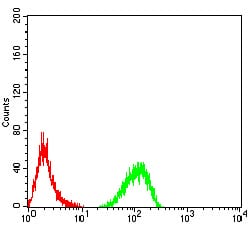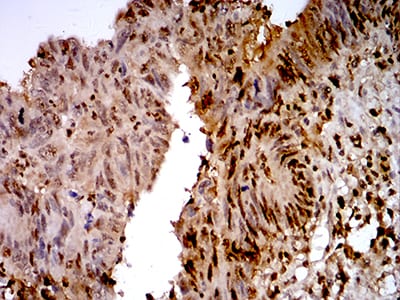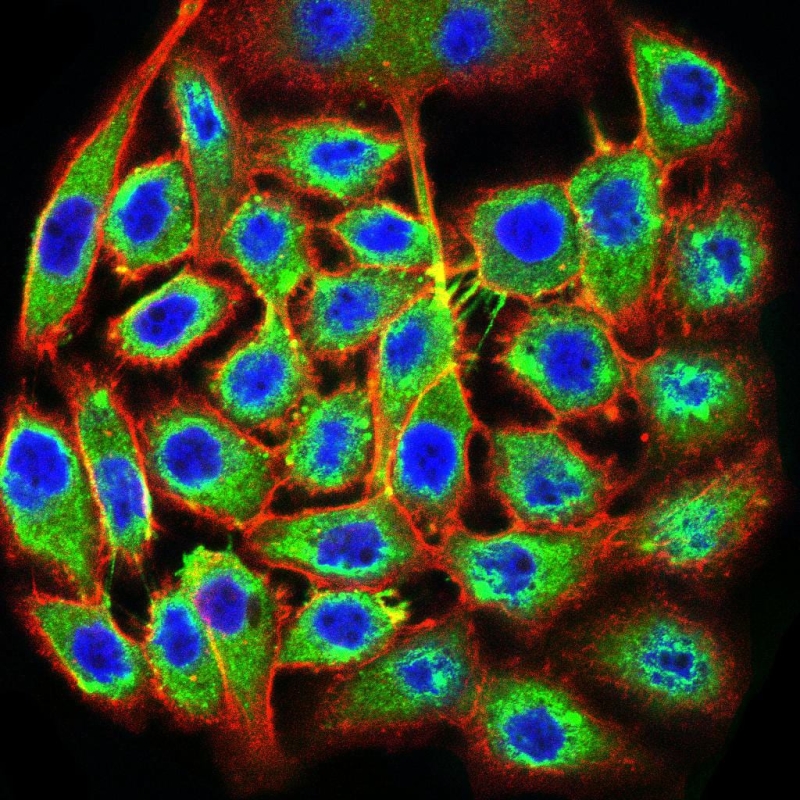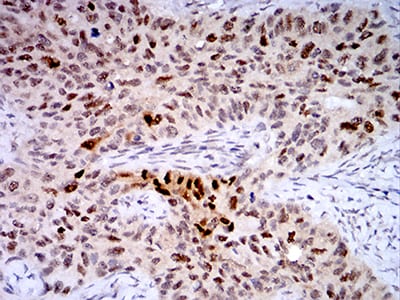





| WB | 咨询技术 | Human,Mouse,Rat |
| IF | 咨询技术 | Human,Mouse,Rat |
| IHC | 1/200 - 1/1000 | Human,Mouse,Rat |
| ICC | 1/200 - 1/1000 | Human,Mouse,Rat |
| FCM | 1/200 - 1/400 | Human,Mouse,Rat |
| Elisa | 1/10000 | Human,Mouse,Rat |
| Aliases | TTF-1; TTF-I |
| Entrez GeneID | 7270 |
| clone | 2F4D8 |
| WB Predicted band size | 103kDa |
| Host/Isotype | Mouse IgG1 |
| Antibody Type | Primary antibody |
| Storage | Store at 4°C short term. Aliquot and store at -20°C long term. Avoid freeze/thaw cycles. |
| Species Reactivity | Human |
| Immunogen | Purified recombinant fragment of human TTF1 (AA: 1-150) expressed in E. Coli. |
| Formulation | Purified antibody in PBS with 0.05% sodium azide |
+ +
以下是关于TTF1抗体的3篇代表性文献(内容基于模拟学术知识库信息整理):
---
1. **文献名称**: **"Utility of TTF-1 and Napsin A in the Diagnosis of Lung Adenocarcinoma"**
**作者**: Ordonez, N.G.
**摘要**: 该研究评估了TTF1抗体(克隆号8G7G3/1)联合Napsin A在肺腺癌诊断中的价值,发现两者联合检测可显著提高诊断特异性,尤其适用于转移性腺癌的原发灶鉴别。
2. **文献名称**: **"Comparison of TTF-1 Antibody Clones (SPT24 vs. 8G7G3/1) in Neuroendocrine Tumors"**
**作者**: Bishop, J.A. et al.
**摘要**: 通过比较SPT24和8G7G3/1两种TTF1抗体克隆在神经内分泌肿瘤中的表达差异,发现SPT24在肺小细胞癌中敏感性更高,而8G7G3/1在甲状腺肿瘤中更特异。
3. **文献名称**: **"TTF-1 Expression in Metastatic Carcinomas: A Marker of Pulmonary Origin?"**
**作者**: Rossi, G. et al.
**摘要**: 分析了TTF1抗体在转移性癌中的表达模式,证实其阳性结果高度提示肺或甲状腺来源,但需结合临床排除其他罕见表达部位(如脑或卵巢畸胎瘤)。
---
如需获取具体文献全文或更新数据,建议通过PubMed或Web of Science检索DOI号后查阅原文。
×